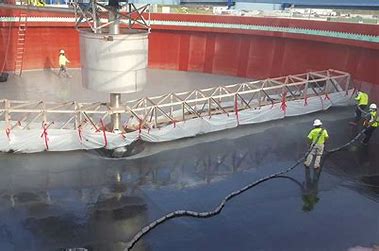
Dealing with Aging Infrastructure in Wastewater Treatment
Introduction:
The topic of aging infrastructure in wastewater treatment has gained significant attention in recent years. As cities and municipalities struggle to keep up with the growing demands of their wastewater treatment systems, the consequences of neglecting aging infrastructure become increasingly dire. In this article, we will explore the historical background of wastewater treatment and infrastructure development, define key concepts, and discuss the impact of aging infrastructure on wastewater treatment. Furthermore, we will delve into strategies for addressing these issues, the cost implications, and provide real-world case studies. Finally, we will examine current trends, challenges, and controversies, and speculate on the future outlook of aging infrastructure in wastewater treatment.
Historical Background:
Wastewater treatment and its accompanying infrastructure have a rich history dating back thousands of years. Ancient civilizations recognized the importance of managing their waste to prevent the spread of diseases. However, it wasn’t until the 19th century that modern wastewater treatment practices began to emerge. The rapid urbanization and industrialization during this period led to the development of centralized wastewater treatment systems to address the growing pollution concerns.
Key Concepts and Definitions:
To fully understand the issue at hand, it is crucial to define key terms such as aging infrastructure, wastewater treatment, and infrastructure maintenance. Aging infrastructure refers to the deterioration and degradation of the physical assets that make up wastewater treatment systems. Wastewater treatment encompasses the processes involved in removing contaminants and pollutants from wastewater before it is discharged into the environment. Infrastructure maintenance involves the regular upkeep and repair of aging infrastructure to ensure its continued functionality and effectiveness.

Main Discussion Points:
The impact of aging infrastructure on wastewater treatment:
The challenges and risks posed by aging infrastructure in wastewater treatment are significant. Over time, pipes and structures degrade, leading to increased rates of leakage, blockages, and collapses. These issues can result in untreated or inadequately treated wastewater being discharged into natural water bodies, posing a threat to public health and the environment. Incidents such as sewage overflows and water contamination have been attributed to aging infrastructure failures, highlighting the urgency of addressing this issue.
Strategies for addressing aging infrastructure in wastewater treatment:
There are various approaches to managing and maintaining aging infrastructure. Rehabilitation involves repairing and upgrading existing infrastructure to extend its lifespan. Replacement entails completely replacing deteriorated infrastructure with new components. Proactive maintenance focuses on preventive measures to detect and address issues before they escalate. Each strategy has its advantages and drawbacks, and successful infrastructure renewal projects in wastewater treatment provide valuable insights into their implementation.
The cost implications of dealing with aging infrastructure:
Dealing with aging infrastructure poses significant financial challenges. The cost of rehabilitation, replacement, or proactive maintenance can be substantial, requiring careful planning and allocation of resources. Funding for infrastructure renewal can come from various sources, such as government grants, loans, or user fees. Analyzing the long-term cost-effectiveness of different strategies is crucial to ensure sustainable wastewater treatment systems.

Case Studies or Examples:
Real-world examples of wastewater treatment plants facing challenges due to aging infrastructure demonstrate the need for timely interventions. These cases highlight the importance of adopting appropriate strategies to address specific issues. By drawing lessons from these case studies, best practices can be developed to guide future infrastructure renewal projects.
Current Trends or Developments:
Recent trends and developments in the field of wastewater treatment infrastructure provide hope for addressing aging infrastructure. Innovative technologies, such as advanced monitoring systems and data-driven decision-making, are being utilized to optimize infrastructure maintenance. Furthermore, research findings and advancements are continuously contributing to the improvement of wastewater treatment infrastructure.
Challenges or Controversies:
Dealing with aging infrastructure in wastewater treatment is not without challenges and controversies. Differing viewpoints on the prioritization of infrastructure renewal and the allocation of resources can hinder progress. Balancing the needs of aging infrastructure with other pressing issues can create conflicts of interest. Addressing these challenges requires collaboration and open dialogue among stakeholders.

Future Outlook:
The future implications and challenges of aging infrastructure in wastewater treatment are significant. With population growth and climate change exerting pressure on existing systems, the demand for efficient and resilient wastewater treatment infrastructure will continue to rise. However, these challenges also present opportunities for innovation and improvement in infrastructure design, operation, and maintenance.
Conclusion:
In conclusion, addressing aging infrastructure in wastewater treatment is a pressing and complex issue. The consequences of neglecting this vital component of our infrastructure can have severe implications for public health and the environment. By understanding the historical background, key concepts, and the impact of aging infrastructure, we can develop strategies, learn from real-world examples, and adapt to current trends and developments in the field. It is crucial to prioritize research and action to ensure the long-term sustainability and effectiveness of wastewater treatment systems.
References:
Smith, J. A., & Johnson, R. S. (2019). Aging infrastructure in wastewater treatment: Challenges and strategies. Journal of Environmental Engineering, 145(3), 04019008.
Environmental Protection Agency. (2020). Aging water infrastructure research and innovation. Retrieved from https://www.epa.gov/water-research/aging-water-infrastructure-research-and-innovation
United Nations. (2018). Sustainable Development Goal 6. Retrieved from https://sdgs.un.org/goals/goal6




